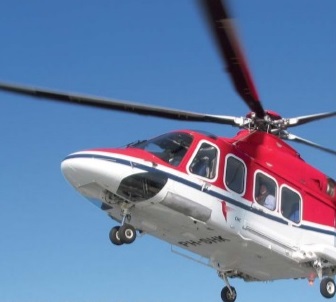Helicopter operations are typically used on ships for crew changes, Pilot transfer (embarkation and disembarkation), emergencies as MEDEVAC (medical evacuation), and/or rescue. They are considered severe, high-risk operations, as they require personnel/equipment and crafts other than vessels, and they need accuracy, training, and established procedures. The officers and crew members amalgamated with the scene for these actions should show a high level of situational awareness and good seamanship. We have highlighted good practice examples for safe helicopter landings.
Incorrect helicopter markings on the ship's deck can, at times, be misleading and result in an accident. Ambiguous helicopter markings might also result in a pilot's refusal to board the vessel by helicopter, which could cause an expensive delay to the ship.
There are two types of recognized helicopter markings, a landing area or a winching area. If a landing area is provided, the hatch or deck area must be suitably strengthened and approved for the type of helicopter envisaged. The areas used by the helicopter landing gear or by personnel should have anti-slip surfaces effective when wet.
Good aviation practice requires that the colors used should contrast with the standard ship's paintwork. Letters should be painted in white, and lines should always be painted yellow. Touch-down zones should be painted in a dark grey or dark green non-reflective color.
All helicopter markings should follow the International Chamber of Shipping Guidelines rather than be left to the imagination of a ship's crew.
Master's command
The Master shall maneuver the vessel during helicopter operations. All related activities are to be conducted following the ICS Publication "Guide to Helicopter/Ship Operations" and concerned personnel briefed by him on their duties and safety precautions.
On-scene command
The Master shall designate a Deck Officer to command on-scene operations.
Safety check & records
The Deck Officer in charge and officer of the watch shall check and complete the conditions in the Checklist for “Helicopter Operations” and report the same to the Master. Relevant entry to be made in the deck log book to this effect.
Exchange information with helicopter
The Master shall exchange sufficient information with the helicopter pilot before operations, particularly concerning vessel heading and speed, weather conditions, vessel maneuver, and other necessary details.
Transferring personnel
The On-Scene crew and all personnel being transferred to or from the vessel shall comply with following guidelines:-
Do not approach or leave the helicopter without being cleared to do so by the helicopter pilot and/or the winchman and the Deck Officer in charge.
-
Always approach the helicopter in a crouching position and from an angle where you are always in full view by the helicopter pilot.
-
Keep well clear of the helicopter rotors, which are often difficult to see.
- Stay clear of the helicopter’s exhaust outlets.
- Passengers wear an inflatable lifejacket or survival suit as required by the helicopter pilot.
Landing or winching
Follow the guidelines for landing or winching in the ICS “Guide to Helicopter/Ship Operations”
Where available, the Aiming Circle of landing area shall be coated with a matt anti-slip surface painted in a non-reflecting color which contrasts with other deck surfaces.
Action in case of accident
In case of accident involving Helicopter, the Master shall be guided as per “Duties &
Suggested Action Plan for Helicopter Accident”
Training for helicopter operation
The master shall apply the proper training of helicopter operation for crew may concern in accordance with this procedure. And it’s to be recorded in “Onboard CBT & Video Training Record”
Related publications
ICS Publication “Guide to Helicopter / Ship Operations”
Related articles
Bridge watch keepers check for navigational equipment
Ships navigation in restricted visibility check item
Ships navigation in confined water check item

Other info pages !
Ships Charterparties Related terms & guideline
Stevedores injury How to prevent injury onboard
Environmental issues How to prevent marine pollution
Cargo & Ballast Handling Safety Guideline
Reefer cargo handling Troubleshoot and countermeasures
DG cargo handling Procedures & Guidelines
Safety in engine room Standard procedures
Questions from user and feedback Read our knowledgebase
Home page

ShipsBusiness.com is merely an informational site about various aspects of ships operation,maintenance procedure,
prevention of pollution and many safety guideline. The procedures explained here are only indicative,
not exhaustive in nature and one must always be guided by practices of good seamanship.
User feedback is
important to update our database. For any comment or suggestions please Contact us
Site Use and Privacy - Read our privacy policy and site use information.
//Home //Terms and conditions of use
Copyright © 2015 www.shipsbusiness.com All rights reserved.



